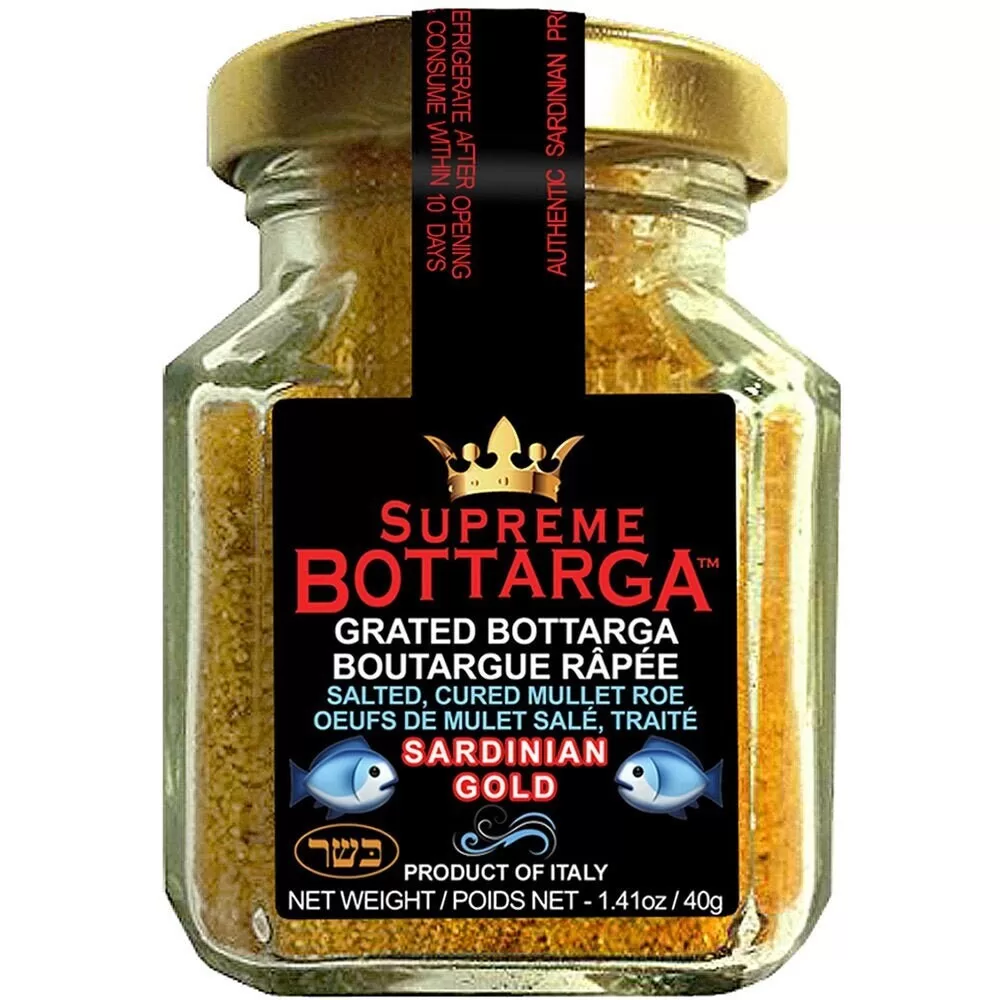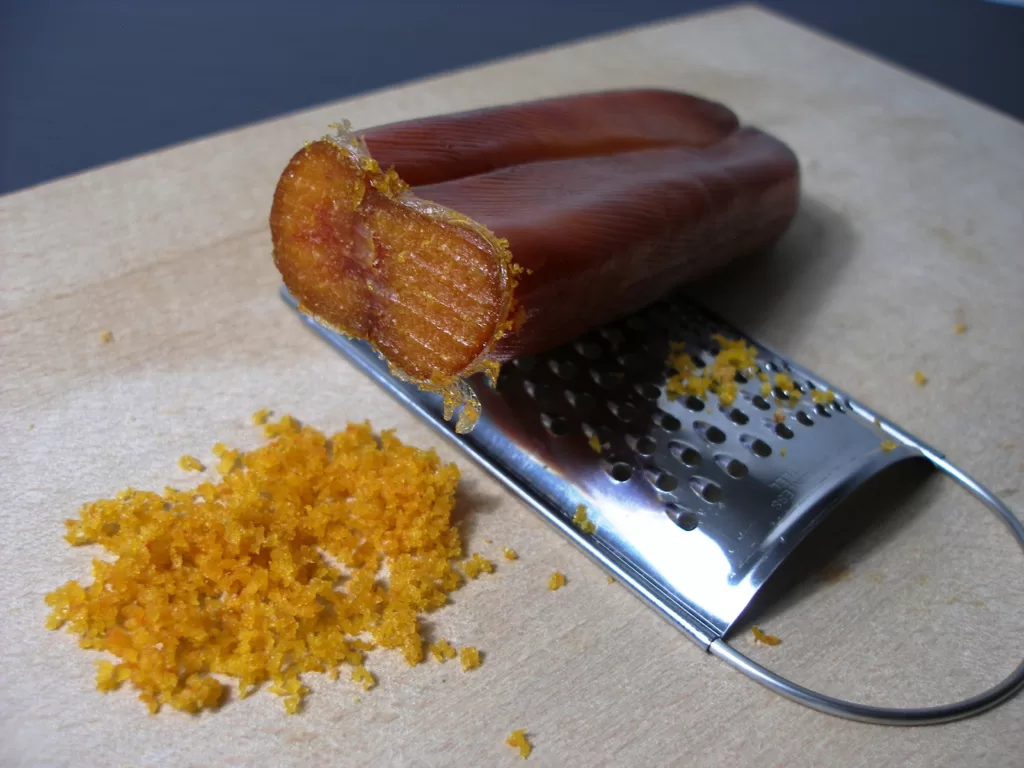Among Sardinia’s gastronomic treasures, one delicacy shines as a true embodiment of Sardinia’s maritime heritage and commitment to preserving traditional flavors: bottarga. Often affectionately dubbed “Sardinian caviar,” bottarga is a cherished ingredient that encapsulates the essence of Sardinian culture and cuisine.
Whenever I depart from Sardinia, I buy a few jars as gifts, and some packets of the stuff for myself. It’s never as popular when I cook it for friends and family, somehow it really only belongs in Sardinia, and doesn’t taste the same when cooked in the UK. Or maybe its my cooking or even the British lack of refinement when it comes to food.
Bottarga, pronounced boh-TAR-guh, is a delicacy crafted from the salted and dried roe (eggs) of gray mullet or bluefin tuna, two fish species abundant in the waters around Sardinia. The process involves carefully removing the roe sacs from the fish, cleaning them, and then curing them with sea salt before letting them air-dry. This meticulous method results in a dense, leathery texture and a bold, concentrated flavor profile that’s both briny and umami-rich.


The roots of bottarga trace back to ancient times, with its consumption noted in the histories of the Phoenicians and the Roman Empire. For generations, Sardinians have honed the art of creating bottarga, passing down techniques and know-how. The production process demands patience and skill, as the curing can take several weeks to attain the desired texture and flavor.
Bottarga’s distinct flavor is simultaneously intense and delicate, making it a prized element in Sardinian cooking. Grated or thinly sliced, it often serves as a garnish to enhance various dishes. One beloved Sardinian classic featuring bottarga is “Spaghetti alla Bottarga.” This uncomplicated yet sophisticated dish involves tossing al dente spaghetti in a light sauce made from olive oil, garlic, red pepper flakes, and a generous sprinkle of grated bottarga. The result is a harmonious blend of flavors that pays homage to both the sea and the land.
Beyond its gastronomic appeal, bottarga carries cultural significance that speaks to Sardinia’s deep connection with its maritime heritage. Fishing and maritime trade have played vital roles in the island’s history. Bottarga embodies the islanders’ resourcefulness by utilizing every part of the fish, embracing sustainable practices that align with Sardinia’s cultural values and respect for nature.
The allure of bottarga extends far beyond Sardinia’s borders, capturing the attention of chefs and food enthusiasts worldwide. Its umami-packed, savory taste lends itself beautifully to a variety of dishes, from fresh salads to elaborate seafood platters. As global tastes continue to evolve, bottarga remains a captivating ingredient that inspires culinary creativity and exploration.
Amidst the rapid globalization of food, bottarga serves as a poignant reminder of the importance of safeguarding traditional techniques and flavors. As Sardinia strides into the future, it clings steadfastly to its heritage, upholding culinary treasures like bottarga. By preserving age-old production methods and maintaining unwavering quality standards, Sardinia ensures that this delicacy stays authentic and deeply rooted in its origins.
In essence, Sardinia’s bottarga is a tribute to the island’s rich culinary legacy, its enduring link to the sea, and its dedication to preserving time-honored traditions. This culinary gem, with its briny sophistication and centuries-old narrative, continues to captivate both locals and global food aficionados. As we relish the distinctive flavors of bottarga, we also celebrate the spirit of a place where tradition and innovation coalesce harmoniously on every plate.
